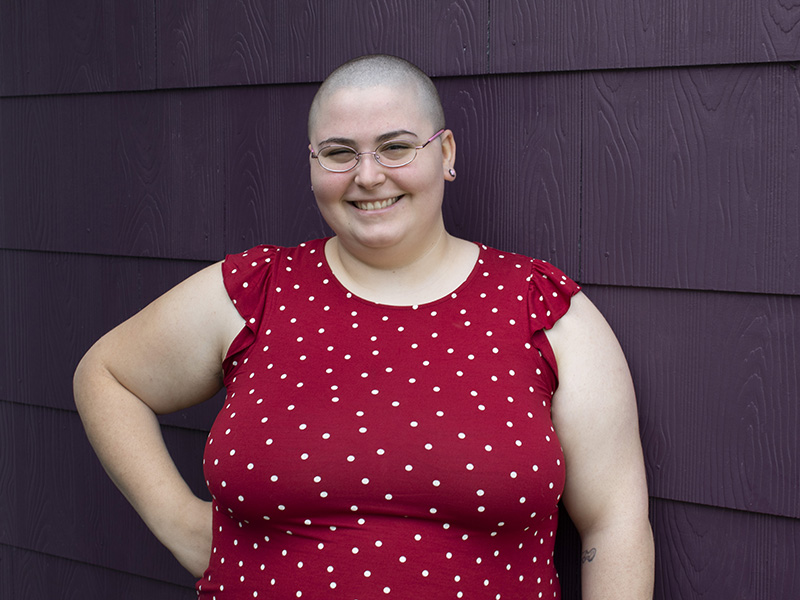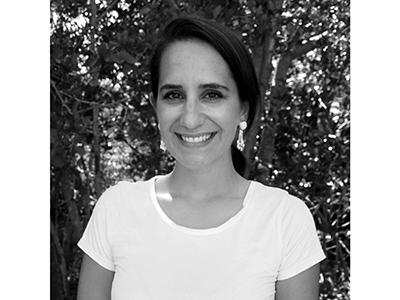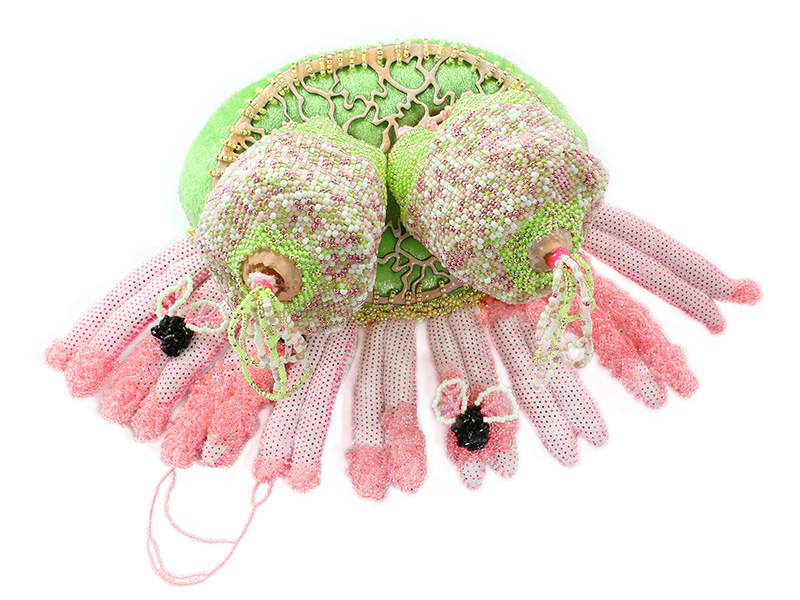
I reached out to Breana for this interview wanting to learn more about her incredible work, but I was delighted to learn so much more through her responses. Breana articulates the perspective and concerns of many new-generation jewelers, who prioritize accessibility and representation, challenge institutions and leaders to take responsibility for shortcomings, question traditional boundaries of material and discipline, and hold constant self-awareness of privilege and life experience. Woven into this interview is a subtle but unwavering call to action to all of us to step it up. That, and some serious eye candy.

Jessica Todd: Tell us a bit about your background and how you got into jewelry making.
Breana Ferrara: My grandfather, Anthony Ferrara, was a clothing and costume jewelry designer (he still is!) and his shop was like heaven for me. Growing up, I used to go up and down the aisles, plastic bag in hand, and take whatever he would let me from his boxes of cabochons and findings. Looking back, I realize that his taste influenced my tacky, kitsch, over-the-top aesthetic. In the 80s he had a metal mesh and leather clothing line called “flash and trash,” which is all I’ve ever wanted in the jewelry I make!
I ended up at Massachusetts College of Art and Design (MassArt) to study fashion design—I had hoped to one day make truly inclusive plus-size clothing because I’m passionate about fat activism and body positivity. However, I didn’t feel passionate in my fashion classes the same way I did in my jewelry and metalsmithing classes. Making jewelry allows me to access the most emotional, expressive, and vulnerable places in myself, and—most of the time—feels like unconditional love.
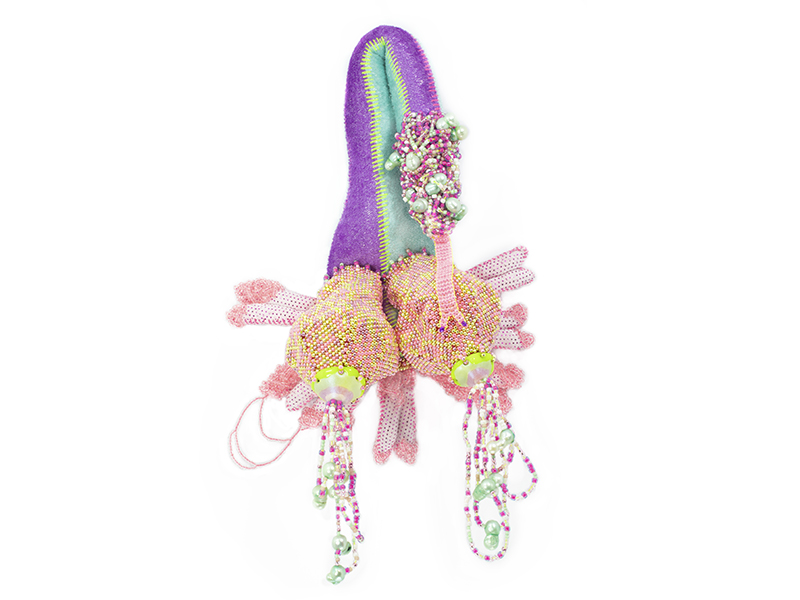
RELATED: A Video Conversation with Joyce J. Scott
RELATED: That Weird Attraction/Revulsion Thing
RELATED: Change We Can Wear
How did you arrive at the work you’re making right now?
Breana Ferrara: I have always been obsessed with the aesthetics our society tends to shame or treat as taboo. I love corpulent, bloated forms, overflow, wrinkles, sagging, dripping, and excess. I love total indulgence, pleasure, and hedonism; glorifying guilty pleasures instead of condemning them; celebrating sexuality and vulnerability; and through all of that, relating to others through my jewelry. I think a lot about the connection between pleasure and shame—often the very things that make us feel vulnerable or ashamed are the things that allow us to connect deeply with one another.
As an undergrad, I focused on how these concepts related to my personal trauma and shame. I made a lot of blatantly repulsive forms that were ugly but had a certain sensuality or allure to them. I’m still proud of that work, but it was traumatic to make because it was about traumatic experiences. While I still love the aesthetic of excess, I focus less on repulsion. I’ve made my practice healthier by shifting from a one-dimensional, painful view of my past trauma to a more complex and multifaceted perspective that highlights the ways I’m worthy, important, and beautiful.
In the past year, I’ve begun exploring anthropomorphic, rather than human, forms. My obsession with the paranormal and cryptozoology, and the appeal of discovering things yet unknown, has led me to this new work. The forms are inspired by animals, mixed with human-like bodily forms, and exaggerated to become other-worldly. Metaphorically, and in line with my earlier work, each is a beautiful manifestation of a secret that may be over the top, excessive, vulnerable, or a little scary. My jewelry allows wearers to loudly express something from deep within themselves that they otherwise may be afraid to express.

Do your personal identity and lived experiences play into the work you make?
Breana Ferrara: My lived experiences are inseparable from the pieces I make. I’ve always felt that it was hard to relate to others because of my past traumas and the ways they affect me on a daily basis. I existed for most of my childhood and adolescence in a household that didn’t accept me or love me unconditionally, and I faced a lot of abuse. My mom, who was my main source of unconditional love, passed away when I was seven years old, and I grew up faster than my peers. That experience led to social anxiety, and it’s still hard for me to be myself around others.
However, in my work I feel total freedom to be my true self and to share things about myself in an unapologetic way. My jewelry is a way for me to love myself, which is something I’m always working on (aren’t we all?), and I want others to love themselves, too—to feel acceptance and safety in being vulnerable. My practice allows me to give in to what I need and what I want. My work is also fun, light-hearted, hilarious, and tongue-in-cheek, so those parts of my personality come through, too.
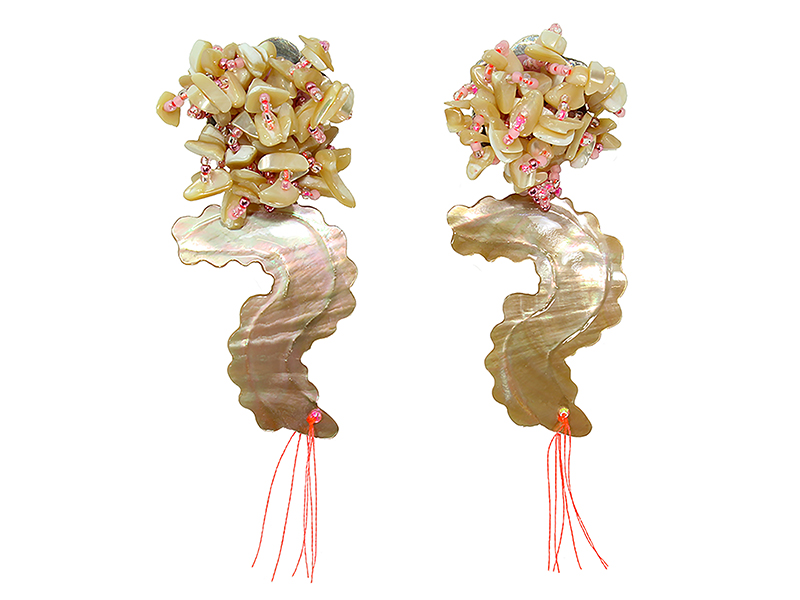
You completed a BFA in jewelry and metalsmithing at Massachusetts College of Art and Design (MassArt) in Boston in 2017. If you could go back in time, would you study jewelry/metals at the university level again? Would you recommend a university education in studio art to other early career artists?
Breana Ferrara: I definitely would go back and do it again! At MassArt, concept is super important in everything you make and you’re really challenged to dive deep into the “why,” even when you don’t know the answers. That has allowed me to explain what I do in a much clearer way. Also, your professors become your mentors, and that’s an invaluable experience. Of course, there are some ways college jewelry programs could be better. I definitely wasn’t prepared to go out into the “real world” after graduating. There could have been more classes on the business end of things, for sure. Going to college to learn a craft is a privilege—it’s a huge financial commitment and I recognize that not everybody has the means to experience it. It’s a very personal decision, but I have zero regrets about going to MassArt.
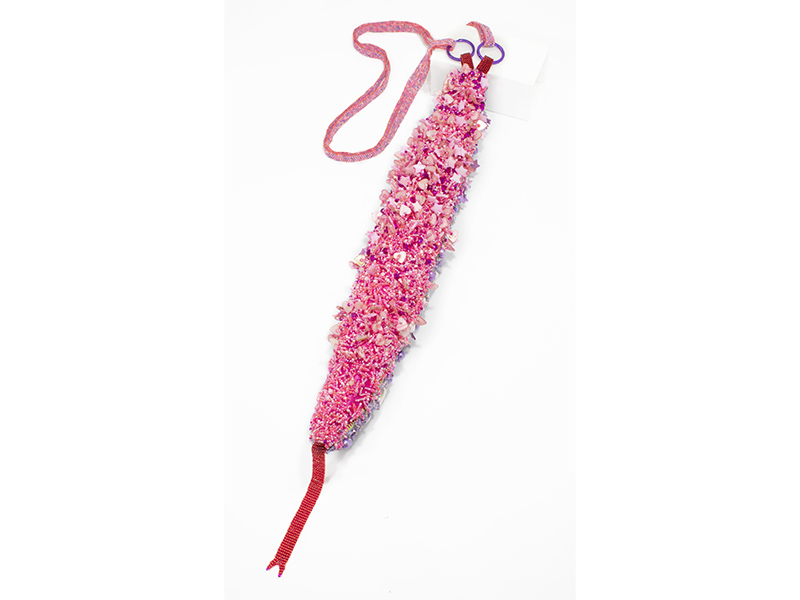
How have limitations on studio access post-university contributed positively or negatively to your current art-making practice?
Breana Ferrara: I’m super lucky that I still monitor the metals studio at MassArt one day a week and in return get studio access, which is a total privilege. Still, it’s difficult having to limit anything that needs fire or specialized equipment to that one day. However, having this limitation has challenged me to branch out of my comfort zone with materials and construction. I can be a little more wild, free, and experimental, and this has led me to use the most taboo material … beads. I feel like beads are frowned upon or seen as too low-brow or commercial, but of course this isn’t true—many jewelers use beads in their work successfully. Jewelry has a lot of fundamental rules (that can and should be broken!) and I’m so happy I learned them, but now I’m in new territory. I look forward to getting back into more metalsmithing one day, but for now I’m enjoying this precious moment of true experimentation and freedom.
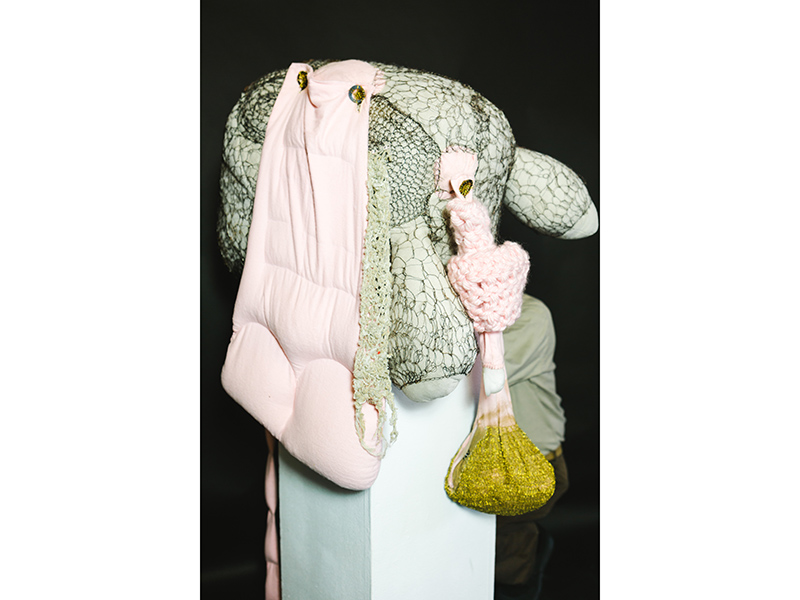
In May, you participated in Adorned Spaces as a member of the Pink Rat Collective at the SNAG conference in Chicago, which—for those who don’t know—is a room full of pop-up-style exhibitions that takes place in the conference’s host hotel. What was your experience like crowdfunding with GoFundMe to make the whole thing happen? What did you gain from the experience overall?
Breana Ferrara: GoFundMe is a really great way to fund projects that seem out of reach financially! The majority of the Pink Rat Collective members couldn’t even fund their travel, never mind an exhibition, which is a challenge a lot of emerging artists face. I think GoFundMe is more successful when you offer incentives—you get a lot more donations when you offer cool merch in return for different funding levels. Also, encouraging a lot of small donations really adds up.
Asking for money can be uncomfortable, but it was a great surprise that we got so much love. We all felt incredibly privileged and humbled that our fellow creatives believed in us, and the exhibition we wanted was realized! The whole process of fundraising, curating, planning, and installing an exhibition was so important in building the confidence that I could do it again in the future. I also really loved working with my fellow Pink Rat Collective members—it was a vital lesson in compromising and cooperating to achieve a collective vision. So much love and planning went into our exhibition and all of us were thrilled that others seemed to be excited and inspired by what we had to say.

What kind of support from arts organizations, educational institutions, funders, etc. would help you advance your career as an emerging artist? Is there a form of support you received in the past that was particularly helpful to you? What made it so helpful?
Breana Ferrara: The thing I most need to advance my career is an opportunity for gallery representation—I need to show my work to a wider audience outside of social media, and I’ve had a hard time finding that platform or knowing how to find it. I graduated from college with pretty much zero idea of how to start a successful career. It would be helpful to have more resources (online articles, video courses, workshops, etc.) for emerging jewelers on topics like marketing, gallery representation, sales, and pricing. They need to be free or low cost to be accessible, since many emerging artists are paying off student loan debt and barely making ends meet. Other ideas I have include creating more mentorship opportunities outside of universities, compiling a list of galleries dedicated to supporting emerging artists, and providing scholarships to attend craft schools. These kinds of opportunities help us find our way and allow more voices to be heard and more people to contribute to our field.
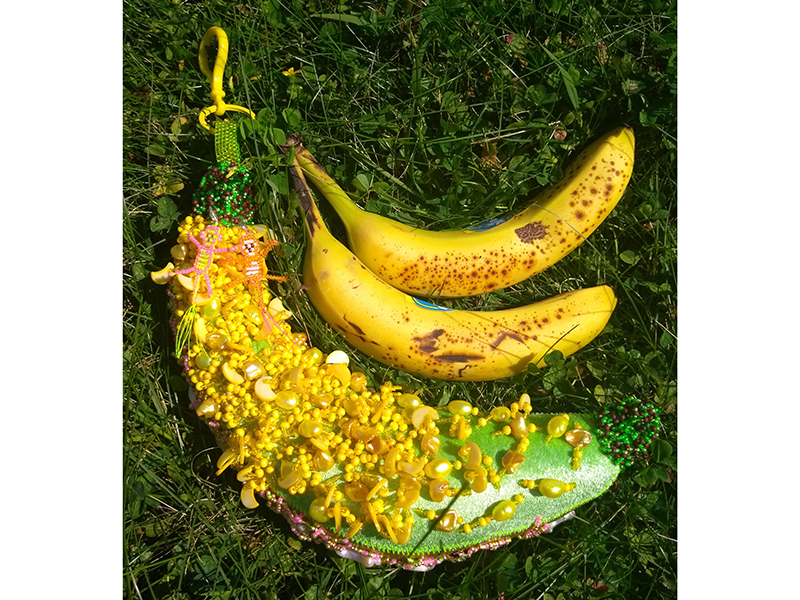
What’s your hope about the future of the jewelry/metals field? How do we get there?
Breana Ferrara: My hope is that the jewelry community can be as diverse and accessible as possible and can represent as many underrepresented groups as possible. I see a lot of jewelry on thin, white, non-disabled, cis people, and a big lack of representation overall. I think that’s changing—new generations of jewelers are working toward representing other voices and bodies. It isn’t enough to just say we want a more diverse field—the people with power and privilege need to step aside and make room for other voices. We can do this by inviting underrepresented jewelers to be in exhibitions, choosing to buy from them, sharing their work with our networks, or inviting them to do artist talks and panel discussions. We need to give those who haven’t had the representation they deserve the space to be amazing and change our field.
Physical accessibility is another concern. The Pink Rat Collective had a big discussion about this when planning our display—if it’s too high, someone who uses a wheelchair might not be able to view it, or if it’s on the ground, someone with mobility issues may not be able to bend down to see it. We need to start being conscious of how and where we exhibit our work because it makes a difference in who will be able to view it, and thus who gets to show up and represent. Financial accessibility is another concern—who can afford a jewelry class or degree program? Who can pay submission fees? Is there aid for people who can’t afford it?
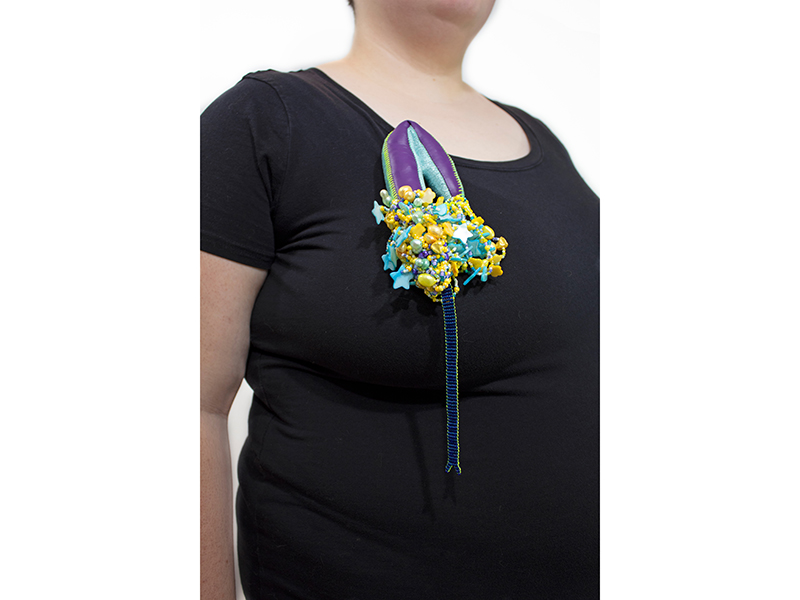
We can all think more critically about how our actions exclude others from joining in on the conversation. As big as these issues are, change can happen through small and accomplishable gestures that help the future of our field. The jewelry field can’t evolve and move forward without all voices present, and those whose voices have already been heard need to sit down and make room for those who haven’t had the chance to speak. We’re already making progress, for sure—good things are happening—but it needs to continue and become more regular.
Catch Breana Ferrara’s work at New York City Jewelry Week (November 18–24, 2019) in Icons at Play: The 4 Ring Circus, at the Pratt Institute; Pattern Play, at E.R. Butler & Co., in SoHo; and Lonely Hearts Club, at 325 Canal Street. Her work will also appear in *SHiNY THiNGS* Pop-Up 2019, held in December at Kendall Reiss Gallery & Studio, in Bristol, RI. Follow her on Instagram @corpulence_drip.
